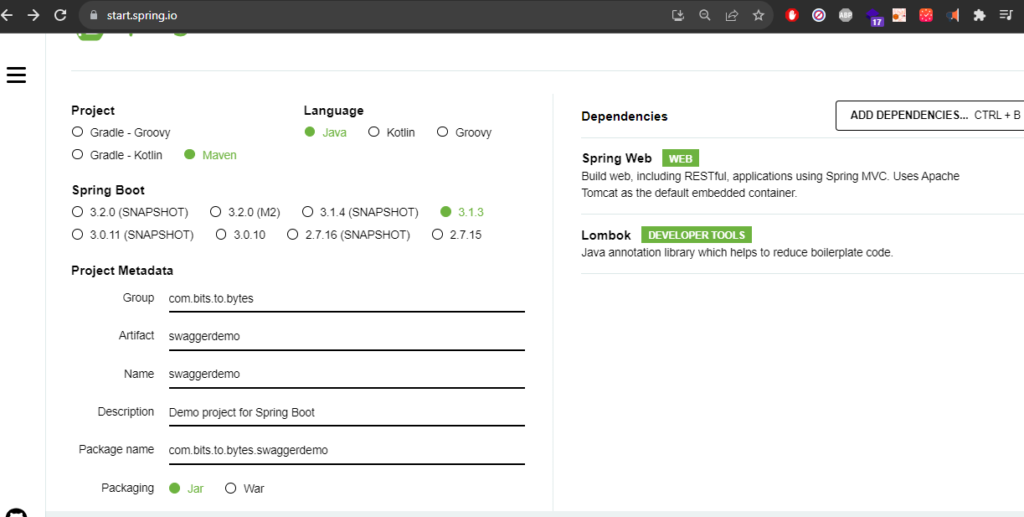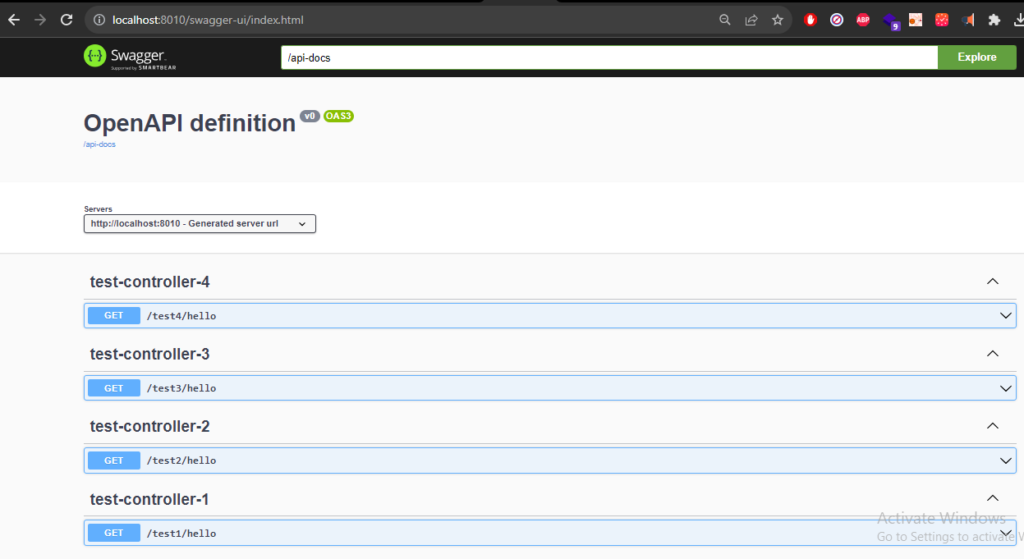Introduction to Spring Swagger:
In the ever-evolving landscape of web development, creating robust and well-documented APIs is a critical aspect of delivering successful projects. Spring Swagger, an integration of the popular Spring framework with the Swagger tooling, emerges as a powerful solution to streamline API development and documentation in Java applications. This synergy allows developers to not only build RESTful APIs with the Spring framework but also effortlessly generate comprehensive and interactive documentation.
Practical:
We can create a new spring project from site: start.spring.io with the following dependency:

OPENApi dependency for swagger:

Lets create some sample controllers and check if they are visible in swagger UI. For this example I created following endpoints:
- /test1/hello
- /test2/hello
- /test3/hello
- /test4/hello
Swagger API UI link: http://server:port/swagger-ui.html

Great its working lets see what @ApiOperation, @ApiResponse, @ApiResponses, @Parameter, Schema Definitions are used for:
@Operation: It is specifically used at the method level to describe the purpose of a particular API operation.
@ApiResponse: It complements the @ApiOperation annotation by allowing developers to specify details about the possible responses of an API operation. It enhances the clarity of API documentation by providing information on the expected HTTP status codes, response messages, and response types.
@Parameter: The @Parameter annotation is applied to method parameters within a Spring controller to specify details about the input parameters for a particular API operation. It enhances the Swagger-generated documentation by providing information such as the parameter name, type, description, and whether it’s required or not.


